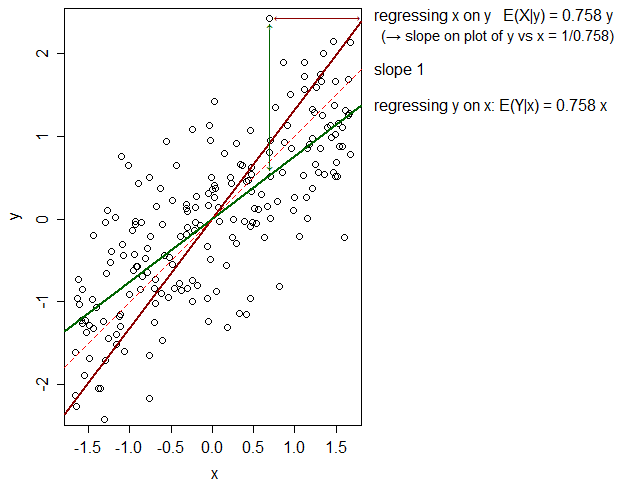I believe this is a basic question, but I still can't seem to figure it out.
In linear regression, if the standard deviation of the x-data and the y-data is 1, the slope of the best fit line is the correlation of X, Y (because slope = cor(x, y) * (sd(x)/sd(y))). Therefore, because the correlation of two variables is between -1 and 1, the slope is between -1 and 1.
Now if we switch the x and y axes, the slope of the best fit line is the reciprocal of the previous one. Thus the new slope can be smaller than -1 and larger than 1. However, this is the same as finding the best fit line with the original X data on the Y axis and the Y data on the X axis. As before, this would give slope = cor(y, x) * (sd(y)/sd(x)). Since the standard deviations are still 1, slope = cor(y, x) = cor(x, y). Thus the slope must be between -1 and 1. Where am I going wrong?

